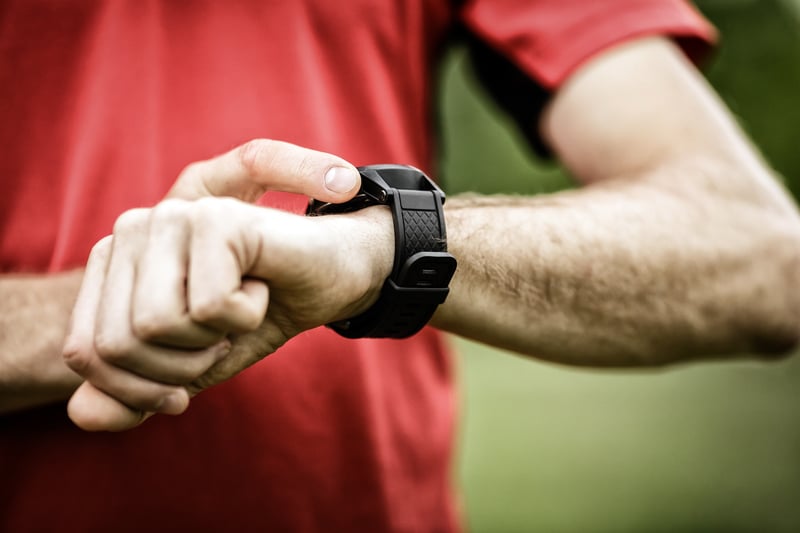
You certainly don’t need a GPS watch or smartphone app to be a runner. But fitness tracking tools like these can give you really useful data to understand your runs.
Often, they go beyond just time and mileage — they can give you detail data on your pace, heart rate, elevation, running cadence, and more. If you want to make the leap from recreational runner to a real racer, they can be super helpful.
But they’re not for everyone, and it’s easy to rely too heavily on them. Here’s why:
The Pros
1) Pacing
In addition to time and mapping, most trackers allow runners to view their pace per mile. This is probably the most useful tool to runners as it provides them with a benchmark throughout training runs. Whether looking to maintain a consistent pace or complete speed work, having access to current pace keeps runners on the right track.
2) Data, Data, Data
Making comparisons between training runs and races are easy with all the numerical data available. Over time, runners can decipher their training in an infinite number of ways.
Tracking your progress between training runs and training cycles can give runners insight into their abilities. Many trackers have visually appealing spreadsheet or graphical comparisons that are simple to reference.
3) Advanced features
Because not all trackers are created the same, some incredibly useful features may not be offered. However, the ability to view elevation, cadence, and heart rate can be huge game changers for runners looking to really up the ante in their training.
Tracking elevation can help provide a better understanding of pace and assist with training for hilly races. Tracking cadence can assist with awareness of running form. And lastly, tracking heart rate can aid runners with mastering training runs with another quantifier besides pace.
The Cons
1) Trackers can’t track everything
Despite what the pace indicates or the heart rate monitor reads, there are still variables that a tracker cannot know. Perhaps you have something weighing heavily on your mind or you consumed too much fiber for breakfast.
It is impossible for a tracker to know that you just received an unexpected raise at work. Therefore, it is important to take note of other factors that could potentially impact running.
2) It’s still an imperfect science
GPS trackers are great measuring tools, but far from perfect. They rely on pushing data at intervals to track your movement. From tall buildings interfering with signals to tight turns with close data points, trackers can easily miscalculate distance.
Many runners who cover regular routes will notice irregularities in distance, despite seemingly traveling the same path.
3) Inability to run by “feel”
It can be easy to get sucked into the data that the tracker provides. If you are staring at your wrist or getting updates every two minutes, your ability to understand your comfort level can be masked. Learn to let the tracker work with you, not for you.
4) Trackers take away the fun
If you use a tracker on a regular basis, when was the last time you went running without it? Though it can be hard to not have the data from one run (hello type-A’s, I’m talking to you!), it can be eye-opening to leave the tracker at home.
Getting back to the basics of just meandering along at any ol’ pace can be refreshing for data addicts. If that sounds too harsh, try putting your tracker in a place where you cannot view it or hear it while you run.





